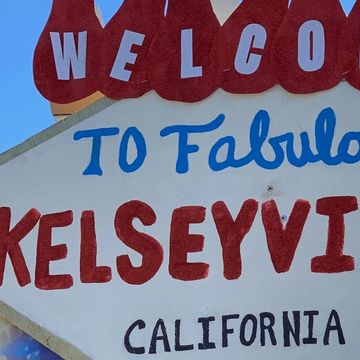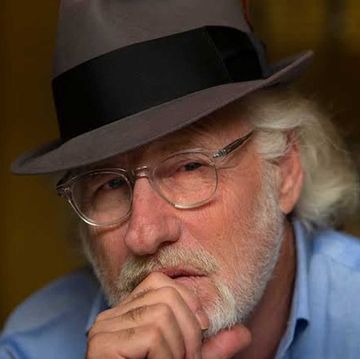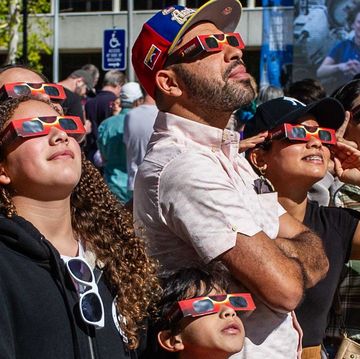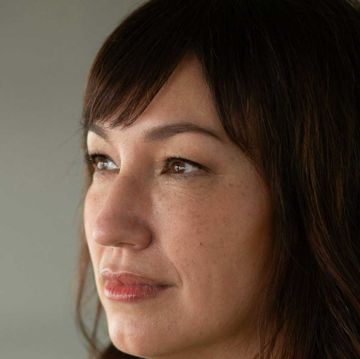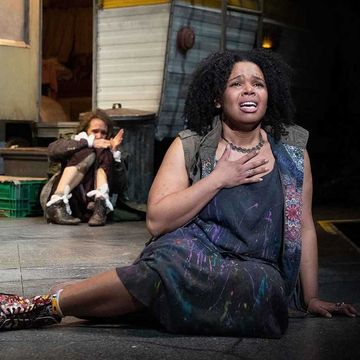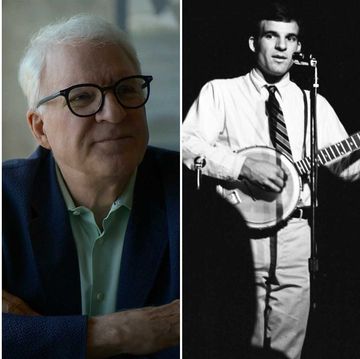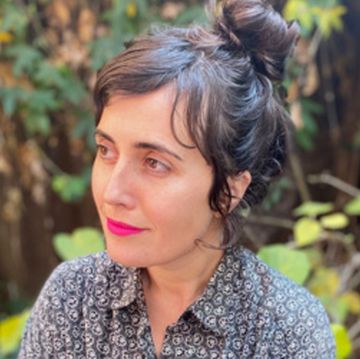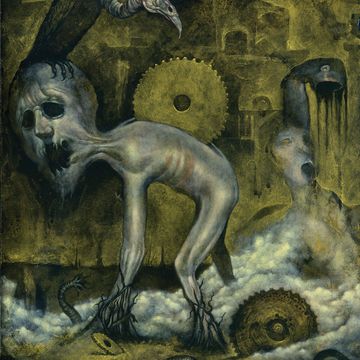On May 7 this year, I drove back to Penngrove from the 21st annual ukiaHaiku Festival in Ukiah (which, spelled backward, is Haiku), where one of the most popular and shortest poetic forms was enthusiastically celebrated by people of all ages. At home that evening, I sat down at my desk to write about a poet known for his thousand-page books. Not just one or two of them. But six and counting. And all those thousands of pages together constitute, most would say, a single poem, one that might only end when the poet’s life ends. Who, you might ask, would write something like this? Or why?
It only gets more interesting. What the Bolinas-based poet, Stephen Ratcliffe, is writing isn’t a tome documenting all his feelings and thoughts (like Knausgaard’s My Struggle) or his own biographical history (like Casanova’s 42-volume The Story of My Life) or the struggles of a nation (like Tolstoy’s War and Peace). His modus operandi, at once more modest and equally ambitious, is a little hard to describe. Here, for example, is a poem from early in the thousand-page Remarks on Color / Sound, which he began in 2005:
7.15
grey whiteness of fog in front of invisible ridge, red
finch flapping toward cypress branch in the upper left
corner, sound of owl hooing from branch across from it
flatness is virtual, the problem is the piece
by piece nature of the demonstration
you need red to make yellow count, but put it
where it helps, in the background perhaps
grey white fog across top of sandstone-colored point,
oval grey green mouth of wave breaking in foreground
And here is one of his recent poems, published in the Bolinas Hearsay News on April 28, 2023, thousands of pages and many years after the poem above:
light coming into fog against invisible ridge quail and sparrow landing by seeds on table next to fence
overtones experience the lever of increasing center of gravity elements continue the view of the period
breathing out eyes slowly opening sound of bird chirping on branch in window beside yellow and blue bed
light grey whiteness of fog against shoulder of ridge
line of white wave breaking into mouth of channel
Light, fog, an invisible ridge, a bird, grey, mouth, wave breaking—so much of the same language in relatively the same order. Day after day, year after year, page after page. (Compare the above poem with those from May that accompany this story.) We might guess that the poet wakes up in the morning and looks out his window in Bolinas and describes just what he sees. It’s often largely the same, but there are always differences. And that method might account for the beginnings and ends of the poems. But in the middle, something else is going on. It’s as though each poem begins and ends with outward description, while in the middle, description moves inward to include a more abstract language that often involves conceptual strategies, references to other writers and artists, and quotations or claims that provoke thinking.
This article appears in Issue 25 of Alta Journal.
SUBSCRIBE
What else is happening in the poems? Well, there is a kind of reassuring music, a rhythm of encounter that, in its cycling, begins to feel familiar, even comforting. It’s too easy to compare Ratcliffe’s poetry to the music of Philip Glass—tightly worked orchestral patterns of repetition and variation. But language adds an additional magnitude of listener/reader involvement. Two other artists whose work might seem analogous are Agnes Martin, whose horizontal pencil lines and delicate bands of color suggest silence and inwardness, and Rakuko Naito, whose lushly iterative paper constructions often retain the rigor of the Fibonacci number sequence.
Many readers find in Ratcliffe’s poetry a spiritual dimension. An editor who lives in Bolinas told me that he looks forward to each new Ratcliffe poem in the Bolinas Hearsay News—“installment,” he said—for its incantatory, prayerlike invitation. The poems exert on him, he continued, a calming effect, almost holy, like the recitation of the paternoster. Each poem like a prayer bead. Repetition as an act of worship.
Reading from any of Ratcliffe’s books seems to slow time down. We’re not rushed along by the plot. We can dip in and out anywhere and not feel lost. We become more attentive to incremental changes. Maybe the poems carry an understated Buddhist acknowledgment of the coming and going of life and death and of all phenomena, but never in a didactic way. The phrases that are reused and rearranged over and over create a rhythmic rendering of intimate space and time—this particular space from which seeing takes place, this particular moment in which thinking occurs. And so the structure of the book reshapes our experience. We are given to share a point of view, an angle of inquiry. We rock back and forth with the writing, outside and inside a mediated space. Inside, outside. We bob back and forth on the waves of writing.
Of course, we live in a time of spectacle, of constantly arriving pings, of ever-faster filmic cuts and exaggerated drama, of FOMO—the fear of missing out. Do you remember Koyaanisqatsi, the film titled with the Hopi word meaning “life out of balance”? The rapidly shifting surface pull of our engagement with living can leave us breathless, unfulfilled, dazed. It’s against that seemingly stopless trajectory that recent countermovements emphasize slow food, slow living, and JOMO, the joy of missing out. (Nietzsche, for all his intellectual energy, described himself as “a teacher of slow reading.”)
The Aztecs believed that the world had ended several times already, by fire, by flood, etc. In our time, they predicted, the world would come to an end due to motion. Perhaps, against our hurried cultural drift, Ratcliffe’s colossal but anchored writing practice takes on a profound spiritual, political, and philosophical importance. John Cage famously noted, “If something is boring after two minutes, try it for four. If still boring, then eight. Then sixteen. Then thirty-two. Eventually one discovers that it is not boring at all.”
As for myself, each time I begin to read Stephen Ratcliffe’s poems, I remember what the musician Prince sings so succinctly: “There’s joy in repetition.”
Here’s an excerpt of our conversation, edited for brevity and clarity.
FORREST GANDER: I wanted to ask you about the several full-length public readings you’ve given from your 1,000-page books. I know of two at least. One at UC Davis and one at the Headlands Center for the Arts, right?
STEPHEN RATCLIFFE: I think the first was with the book HUMAN / NATURE. That was at Davis. It started at four in the afternoon. I took my son, Johnny, up there with me—he was like three. It was my night with him.
And there were musicians there, too, right?
Oh yeah. Video guy, musicians. I started working with a couple of these people at Mills College. There were some grad students in the Music Department. One of them took a poetry workshop, Dylan Bolles, and he built handmade flutes. So we started to do some collaborations there, little performances. He ended up going to UC Davis for a PhD program. So we did this performance there. It started at four in the afternoon, and it ended at six in the morning, so 14 hours.
There was a really special moment for me when, in the middle of the night, I’m sitting there at a tiny little table with these two stacks of 500 pages apiece. There was just a spotlight on this table, and I realized the video had stopped, the music had stopped, and I heard somebody snoring. I realized I was the only person awake in the room. I kept reading. It’s the perfect paradigm of the poet.
And then at the Headlands, was that with musicians, too?
Oh yeah. Some of the same people—they used to call themselves the Thingamajigs Performance Group. Edward Shocker. Keith Evans, who lives in Bolinas now—he’s a video guy. Another guy at Mills, Zachary James Watkins, a guitarist who does a lot of electronics. Edward Shocker does all these things with glass vases filled with water. It’s basically very experimental, and it’s all spontaneous on their part.
And I realize I’m like the timekeeper, because I read the text. And sometimes they’re silent, and sometimes the music builds and it almost drowns out the words, and then it fluctuates up and down. Anyway, it’s like a marathon. It’s exhausting. They’re all recorded on PennSound [an online archive of poets reading their work].
The whole thing?
Yeah, the whole thing.
I love the idea of the audience walking in, staying for a while, walking out.
Exactly. There was a beautiful performance at the Mills College Art Museum when Hung Liu had a show there. You know who she was?
No.
Hung Liu was an immigrant artist from China. She taught at Mills. She passed away maybe two or three, four years ago. Very celebrated. She had a show at the National Portrait Gallery just before she died, or just after.
Anyway, she had an amazing installation. Huge sculptures and a painting maybe 20 feet long behind me where I was sitting at a little table, reading. On PennSound, there are photographs of that event. One of the sculptures in the middle of the museum was made with 200,000 fortune cookies piled up on top of railroad rails. Very political work.
It sounds a bit like an Ann Hamilton installation. She had an installation at Dia where a woman sat all day at a desk with a huge book in front of her, slowly turning the pages. The floor was covered with horsehair.
Oh yeah. I might have seen that. Also, that Marina Abramović performance.
She’s sitting there at a table, and people come up and stare at her. Yeah. The live interactive performances are really interesting to me because it takes a thousand days to write these books, and it’s really slow. And then you read it out loud quickly in one sitting. And I mean, what it does with time!
Right. When I heard you read at Medicine for Nightmares in San Francisco, I was surprised at the fast pace of your reading. Of course, many of your readers, reading the poems to themselves, find them full of peacefulness and very slow, quiet transformations. So how do you feel about that difference? The tranquil private reading versus the rapid-fire public performance with wild music? Is there tension between those modes?
Oh, no, I wouldn’t say that exactly. I mean, the music is totally—it’s an other.
Aha!
I mean, the music has its own sound qualities, and if there’s a visual—a video playing or a sculpture in the room, for instance, then there’s that going on, too.
So for those who are just getting to know your work, what kinds of self-imposed rules govern your daily writing? And when do those rules change? Because they do change.
There are; there are definitely rules. It seems like in every one of these books, the form changes. Although sometimes the change is pretty minute.
In one book, each poem has 12 lines; in another, 11; in another, 9. And—
The rules? Well, I mean, for me there’s always a crisis when I get to the end of a book. Like, what’s next? And I start to think about it even before the end. I’m experimenting with what the shape could be. And what I found, over the time, is that you only figure out how to do it and what it is as you do it. And then there’s this obsessive quality of having all the poems in a book look the same.
What about the middle sections of the poems and how those change from book to book?
Well, I mean, there’s a kind of framing. The two outer pairs of lines frame the two inner pairs. And the inner ones, as you’ve noted, are going inward and tend to be more abstract.
And then the first and the last lines of each stanza are descriptions—framed by your perspective from the window.
Right. Part of what’s amazing about reading them out loud is this sense of ongoingness from one to the next. Whereas if you happen to read just one poem published, say, in the Bolinas Hearsay News, it’s a very different experience.
What’s your daily writing routine?
So when I get up in the morning, I’m taking these photos of what I see outside the window. There’s always a view of what I’m seeing each morning. For instance, this one starts with a description of light gray rain: Blinding whiteness of sun in edge of cloud, above ridge, four quails landing by seeds on table next to fence. So I put birdseed out there on the patio table in the morning. I’m dealing with the same material every day. But the birds change. If I read the lines to you, you’ll see the words are transcribing the world.
Was there a time when you lived close to the beach, where you could see the ocean waves?
No, but I go down there. I take photos at the overlook every day. And then I write.
Oh!
It’s transcribing the world, exactly. And there’s this relationship that I’ve thought about a lot. The relation between the sort of arrangement of things in the world—say, the sun, the ridge, the clouds, the birds, the field—and the words on the page. There’s also a kind of triangulation between the world out there, the wordless picture of the world in the photo, and the image of the words themselves. None of them are quite the same, but they’re all related. You get what I’m saying?
Yeah, yeah. Angles of perception and manners of reception.
The lines of the triangle shift around. But it’s the same.
Sound of wave in channel was published online in 2016 by Editions Eclipse. And in 2018, BlazeVox published two volumes of the poem in book form. But there are changes in the two versions. For instance, the commas at the ends of the penultimate lines in the Eclipse version are deleted from the BlazeVox version. So I was wondering if that meant that, in addition to going forward through transformations in each poem and book, your poems are also being reshaped from behind, post-publication?
Probably. At the time I was editing for the book publication, I think I was taking punctuation out of what I was doing. I began to think the commas were getting in the way, so I removed them. Most of the time there aren’t commas. But sometimes there are. The shape is the dictator.
You’re writing the poem in pulses. Muscular pulses.
Totally. Do you know who Stephen Vincent is? He lives in the city.
San Francisco?
Yeah. I think he grew up in Richmond. He’s a really interesting guy. Once I posted a poem, and he commented, “You’re the Walt Whitman of Bolinas.”
Now, although I myself disagree, a lot of people, including Marjorie Perloff, have criticized Gertrude Stein’s book Lifting Belly as though it revealed a moral lapse because she was writing intimate, erotic love poems while the horrors of World War I were taking place outside her window in France. So I wanted to ask you with regard to your poems: In focusing your work on personal observations of a pristine landscape, are you avoiding writing about the political, cultural turmoil, California wildfires, the earth heating up, species disappearing, voracious capitalistic greed?
Well, I think about that a lot. In some of my earlier books, there was a lot of political stuff. During the Iraq War, the Bush years. At a certain point, when Trump got in there, he appeared in the poems too. But now I don’t want him polluting my work.
Ah. Don’t you think that your focus on the singular is also political?
Oh, absolutely. Here and now. Paying attention to the eternal verities. These assholes are going to come and go, and the politics and the news and all that. In some ways, my work is way out of fashion.
Thank god.
I mean, you do what you can do. And maybe there’s been a change in my own perception of what I’m doing.
Mm-hmm. I can’t help but look at it as the politics of paying attention.
Yeah. But that does include, for instance, in these yellow and black notebooks, my experiences of fire season when everything was burning and we couldn’t go over the pass in the mountains on account of the smoke and fire. I do keep up with the news, totally.
But the poems mostly pay out their attention to daily local observation, daily thought.
Yeah.
Here’s a question. We were talking about the poet Robert Creeley earlier when I saw his books on your shelves. Of course, he also lived for a while in Bolinas. But after publishing his book For Love, which was massively well received, Creeley grew sick of his own fluency. His capacity to write a certain kind of poem. And so he completely changed his approach to poetry in his subsequent book Pieces. He felt like he knew how to create this gemlike thing, but he didn’t want to just keep doing it. And in Pieces, he begins to do something more like what you do. Each poem is a piece of something larger.
Exactly.
So I wanted to ask you, in writing these long books, do you ever have to wrestle with the fluency of your own past accomplishments in these forms?
Well, that’s a great question. I realize what I’m doing here is informed by what I’ve been doing for years, as far as attention to the language. I try to keep doing what I’ve been doing, to keep thinking of and keeping track of things, recording, testifying to, documenting what’s going on out there in the world and in the mind. Thinking and the sound of words. Thinking in words. Sound As Thought, from Clark Coolidge. These poems, the record of one who’s here now in the present, this moment, and who at some point in the future was here.•




